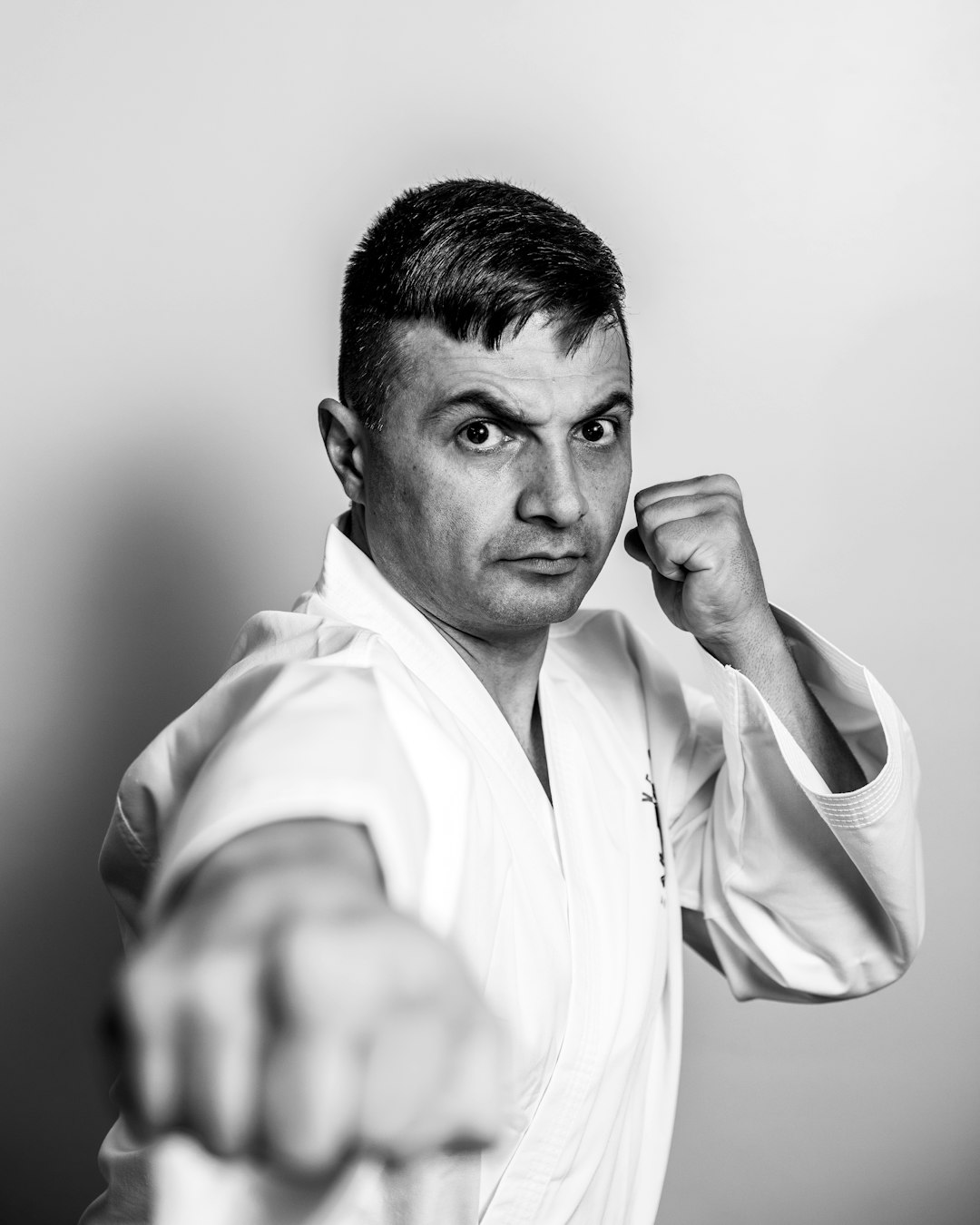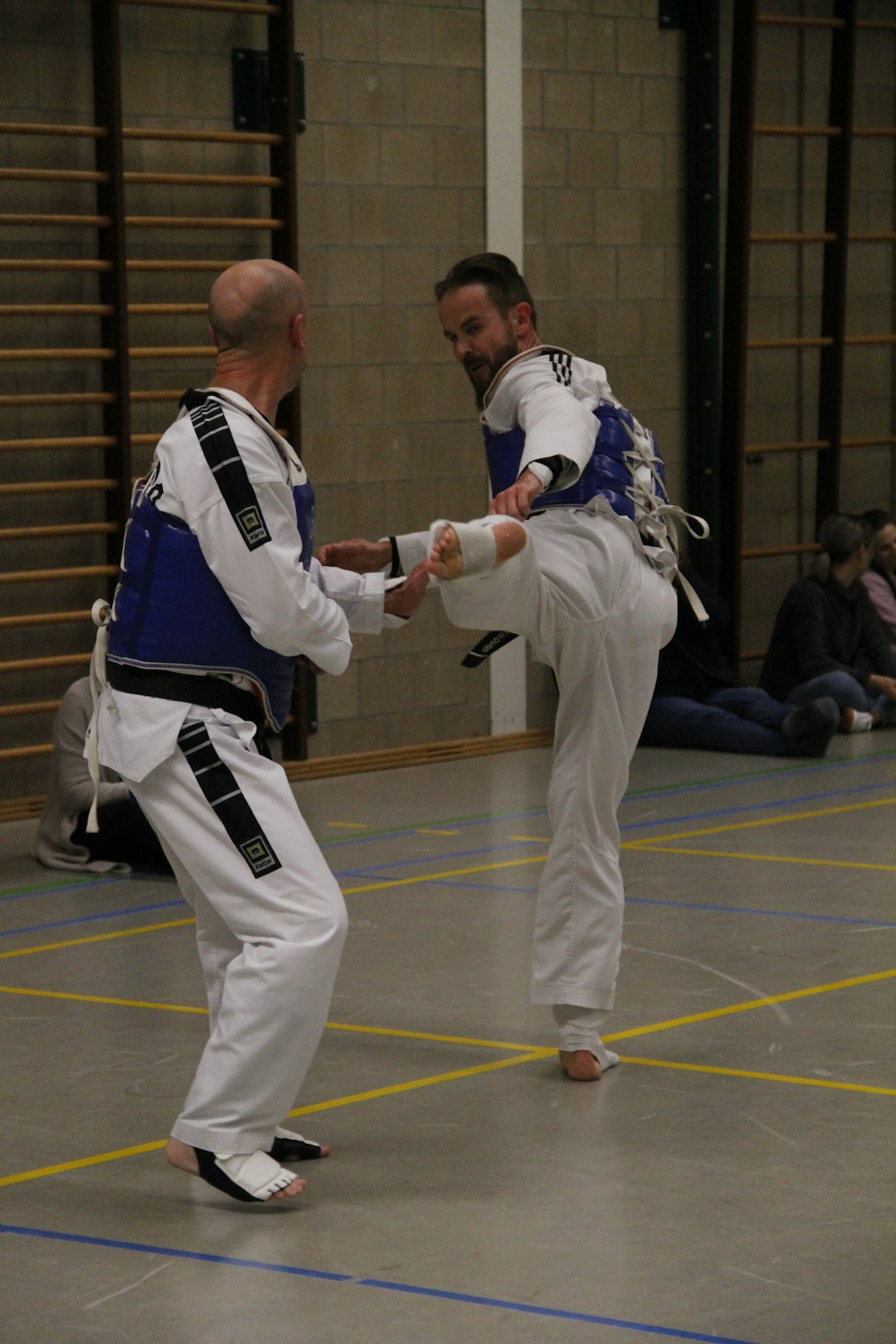When selecting a karate gi, it's important to consider not just functionality but also the deep-rooted traditions and symbolism within martial arts. The modern karate gi has its origins in the keikogi, evolving from its use in both karate and judo, and reflects a legacy that emphasizes purity, humility, discipline, and respect. A quality karate gi should be made of durable and comfortable cotton or hemp blends suitable for year-round training, with traditional features like the four-button front on the jacket and adjustable side tabs with a drawstring waist on the pants. The gi's fit and weight are crucial—it should allow full range of motion and be appropriate for the climate you train in. Additionally, ensure that the color adheres to your dojo's guidelines, as some may accept alternative colors beyond the traditional white. When purchasing, opt for a reputable brand known for authentic karate gis, and consider factors like material, fit, weight, and color, all of which will contribute to a respectful and effective training experience. Always align your choice with both personal preference and dojo regulations, ensuring that your karate gi buy honors the tradition while supporting your physical and spiritual journey in karate.
Exploring the essence of traditional martial arts practice, this article delves into the significance of the karate uniform, commonly known as a Gi. From its historical roots to the modern dojo, we’ll trace the evolution of the Gi and uncover its role in the discipline of karate. Whether you’re new to the martial art or seeking to enhance your practice with an authentic Gi, this guide will navigate you through selecting the perfect garment, fitting it for optimal performance, and identifying reputable retailers where you can buy a karate Gi that meets your needs. Join us as we honor tradition while embracing the practical aspects of acquiring this quintessential piece of martial arts attire.
- Understanding the Karate Gi: A Brief History and Significance
- Components of the Traditional Karate Gi: What to Expect When You Buy One
- Selecting Your Karate Gi: Factors to Consider Before Purchasing a Karate Gi
- The Art of Fitting: How to Ensure Your Karate Gi is Perfect for Practice
- Where to Buy a Karate Gi: Top Retailers and Tips for Making the Right Choice
Understanding the Karate Gi: A Brief History and Significance

When one embarks on the journey to purchase a karate gi, it’s not merely acquiring a uniform but tapping into a rich history that dates back to the origins of modern karate. The karate gi, often referred to as a judogi in the context of judo, has its roots in the traditional Japanese garb known as keikogi, which practitioners wear for training purposes. Over time, the design of the keikogi evolved to accommodate the needs and customs of karateka, leading to what we recognize today as the karate gi. These training outfits are characterized by their white color, which symbolizes purity and humility, core values in martial arts practice. When you buy a karate gi, you’re not just selecting an attire but embracing a tradition that underscores discipline, respect, and the spirit of martital arts.
The significance of the karate gi extends beyond its aesthetic appeal; it is a tangible representation of the dedication to the discipline and the principles of karate. The traditional belt system, which varies in color and signifies rank, is also an integral part of the uniform. As you advance in your practice, the karate gi and your belt become markers of your progress and journey within the martial art. When considering the purchase of a karate gi, one might wonder about the materials, fit, and quality that will offer both comfort and durability during rigorous training sessions. The right gi not only supports the practitioner’s movements but also honors the tradition and history of the martial art they practice.
Components of the Traditional Karate Gi: What to Expect When You Buy One

When purchasing a traditional karate gi, it’s important to be aware of its components and how they contribute to both functionality and tradition in the martial art. The karate gi, often referred to as a judogi, is a two-piece garment consisting of a jacket and pants, typically made from cotton or a cotton blend for durability and comfort during training. The jacket, known as an “uchiwa,” features a belt or obi, which holds the jacket closed and also ranks the practitioner’s level in karate. It’s essential to buy one that fits well; the jacket should reach just below the hips, while the sleeves should be long enough to tuck up above the wrists but not so long as to interfere with movement. The pants, called “are-niwa,” are straight-legged and come with a separate belt, or “obi,” which is used to secure the pants at the waist. They are designed to be fitted around the knees for ease of movement during various karate stances and kata. When buying a karate gi, consider the weight of the fabric; lighter weights are preferred for summer training, while heavier fabrics provide more coverage and warmth for colder months. Additionally, the quality of the cotton weave affects both comfort and durability, so it’s advisable to opt for a reputable brand known for its high-quality karate gis. Are the fastenings on the jacket traditional in design? Yes, they typically consist of four buttons running down the front with a fifth button located near the collar to secure the obi. The pants are secured with a drawstring at the waist and side adjusters to ensure a proper fit regardless of body type. Does the gi come with a belt? Most do, as the belt, or obi, is both a functional and symbolic element of the karate uniform, indicating the wearer’s rank. When buying your karate gi, it’s crucial to choose one that adheres to the standards of your dojo and feels comfortable during rigorous training sessions.
Selecting Your Karate Gi: Factors to Consider Before Purchasing a Karate Gi

When you’re ready to buy a karate gi, there are several factors to consider to ensure you get an outfit that meets both your needs and the requirements of your dojo. Firstly, consider the material; traditional gis are often made from cotton or hemp blend, which provides durability and comfort during practice. Is the fabric suitable for the intensity and duration of your training sessions? Another important aspect is the fit. A well-fitting gi should not be too tight or too loose, allowing for a full range of motion without compromising on coverage and respect for the discipline. Does the garment accommodate your body type and movement style? Additionally, check the weight of the gi; lighter gis are preferable for summer training, while heavier ones offer more warmth during colder months. Are you looking for a year-round gi or one suitable for specific seasons? Color is also a key consideration; white is the most traditional color, but some dojos may allow for colored belts to be represented by a different gi color. What color aligns with your personal preference and dojo regulations? Lastly, consider the brand’s reputation and the gi’s quality. A reputable brand often ensures better craftsmanship and longevity, which can be crucial for regular use. Which brands are recognized for their quality karate gis in the karate gi buy market? By carefully considering these factors, you can make an informed decision and invest in a karate gi that will serve you well during your training journey.
The Art of Fitting: How to Ensure Your Karate Gi is Perfect for Practice

When selecting a karate gi, it’s crucial to consider not only the style and color but also how well it fits your physique for optimal performance during practice. A properly fitted karate gi is essential for both comfort and the ability to execute techniques with ease. The traditional karate gi, also known as a keikogi, should have enough room to allow for a full range of motion without being so baggy that it hinders your movements or so tight that it restricts blood flow and causes discomfort. When you’re looking to buy a karate gi, consider the following: Does the jacket allow for a natural posture while still maintaining a traditional appearance? Is there sufficient flexibility in the sleeves and pants to perform all karate moves fluidly? The jacket should reach just above the belt tied around the waist, not so long that it drags on the floor and not so short that it exposes your torso when raising your arms. The pants, known as hakama for gis with an attached belt, or zubon when separate, should fit snugly at the waist without being constricting, allowing for freedom of movement in the legs. Remember, the karate gi is not just a garment; it’s an extension of your discipline and commitment to the art. Ensure that the one you choose supports you through every strike, block, and kick you perform.
Where to Buy a Karate Gi: Top Retailers and Tips for Making the Right Choice

When seeking to purchase a karate gi, which is the traditional martial arts uniform, there are several reputable retailers where you can buy one that suits your needs and adheres to the specifications of your discipline. One of the top places to buy a karate gi is from specialized martial arts supply stores, which often offer a wide range of gis tailored for different styles of karate. For instance, question: Where can you find a variety of karate gis for different styles and brands? Answer: You can find an extensive selection at specialized martial arts supply stores both online and in physical locations. Another excellent option is to explore well-known sports and fitness retailers that cater to martial artists, as they often carry high-quality karate gis as part of their inventory. Question: How can you ensure that the karate gi you purchase is suitable for your particular style of karate? Answer: To ensure the karate gi meets your style’s requirements, consider the following tips: firstly, check with your karate dojo or sensei to understand the specific color and cut they recommend; secondly, look for gis made from durable, breathable cotton or a blend that offers both comfort and longevity; and lastly, pay attention to sizing charts provided by the retailer to ensure a proper fit.
In addition to finding the right karate gi at the right retailer, it’s also important to consider the weave and weight of the fabric, as these factors can affect both your comfort during practice and the respect you show towards your fellow practitioners and instructors. A lightly woven gi is suitable for warmer climates, while a heavier one provides more warmth and durability for colder environments. Whether you’re buying in-store or online, always read customer reviews to gauge the quality of the gi and the reliability of the retailer. This due diligence will help you make an informed decision and find a karate gi that aligns with your training needs and traditions.
Karate practitioners seeking to acquire a traditional gi should look no further than the insights provided in this article. From tracing the rich history and understanding its significance to learning about the components that define an authentic karate gi, readers are now equipped with the knowledge to make informed decisions when buying one. Considerations for fitting and the best places to purchase ensure that whether you’re a beginner or an experienced martial artist, you can find a gi that meets your needs and honors the discipline’s traditions. Remember to explore reputable retailers and heed the advice on fitting to guarantee a karate gi that aligns with your practice and comfort requirements.
